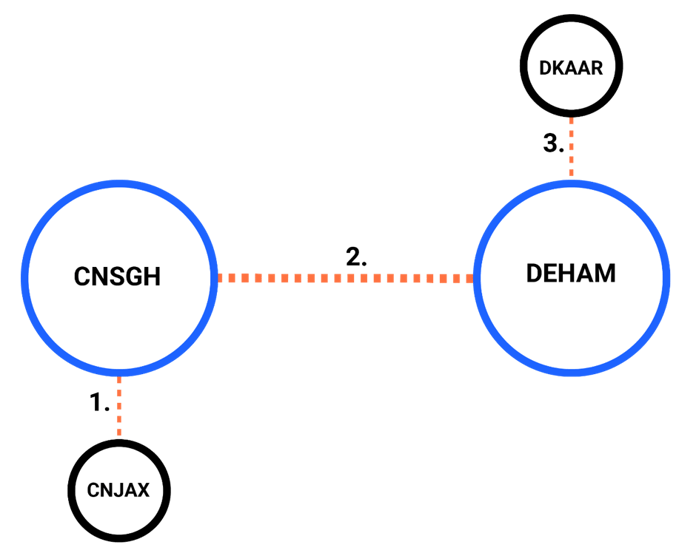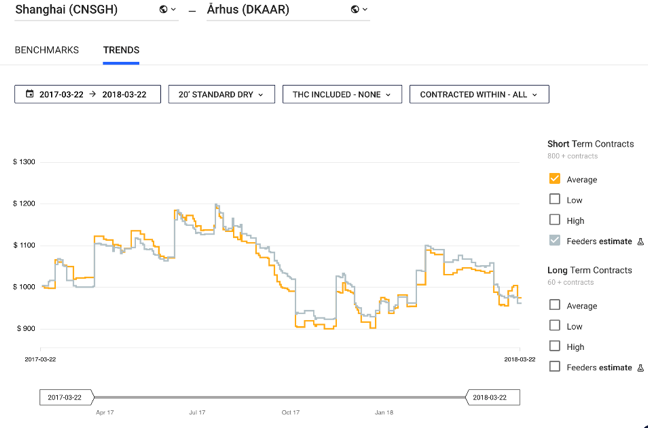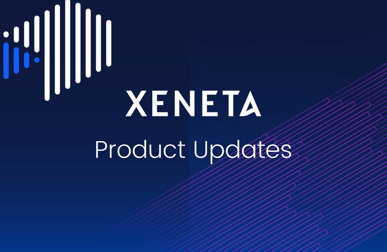
The purpose of this post is to focus on one of the many concepts underpinning the Xeneta product. We will start by focusing on a new feature: feeder-based rates.
As you are probably aware, Xeneta is based on gathering data for container rates shipped between two ports within a given time period. Typically, these “point A to point B” contracts are where the core functionality of our product exists.
However, this approach may be more difficult to use when one or both of the ports fall within a lane that has minimal traffic data available. In these particular cases, we’ve introduced the concept of feeder-based rates. Feeder-based rates allow us to construct what we believe to be a reliable estimate for rates from port A to port B when there isn’t enough existing rate data.

How Does Xeneta Calculate Feeder-Based Rates?
To further explain this point, let us take a sample shipment between Jiaxing - CNJAX and Århus - DKAAR. This shipment can be in principle broken into three separate legs:
- a short journey between Jiaxing – CNJAX and a main Chinese port, e.g. Shanghai – CNSGH, often performed via a small “feeder boat”
- a main intercontinental journey between China and main northern European port (e.g. Hamburg -DEHAM)
- and the final journey to Århus, also performed via a small “feeder boat”

Hence, at a very basic level, the feeder-based rate is nothing else than the sum of the prices of the three legs of the journey:
Feeder passed rate = leg 1 + leg 2 + leg 3
Obviously, there are many other complexities related to reconstructing these rates and we have developed several methodologies in order to address them.
When Will This be Available in the Xeneta Product?
This feature has just been released to all our customers in unison with the new user interface.
More specifically, feeder based rates are presented to our customer both in the dashboard search and in the more detailed trade lane page views.

What is the Geographical Coverage Supported?
In this first instance we have been focusing mainly on smaller Chinese and Northern European ports.
Nevertheless, that is already more than 17, 000 possible port-port combinations of feeder based rates that Xeneta supports.
That is a fairly impressive number! But of course, we are not stopping here. The US East and West coasts should be available in the next months and then the Mediterranean region will be covered. Global coverage is the ultimate goal!
Stay tuned - There's more to come in the feeder space!
If you are still curious about feeder based rates then please visit our help centre
%201.png)





